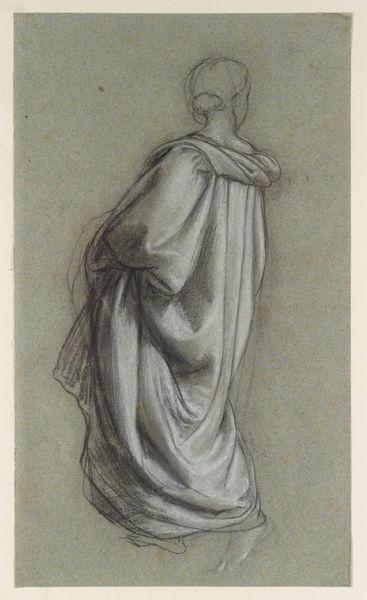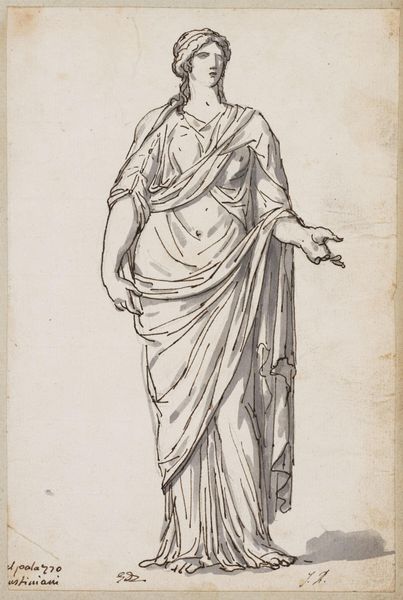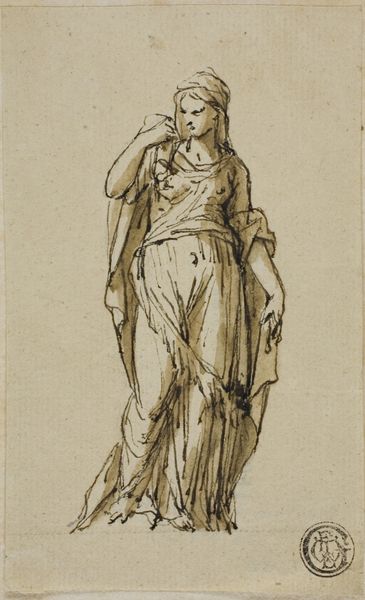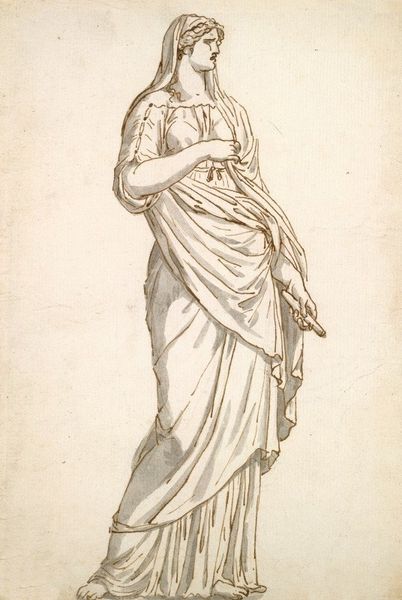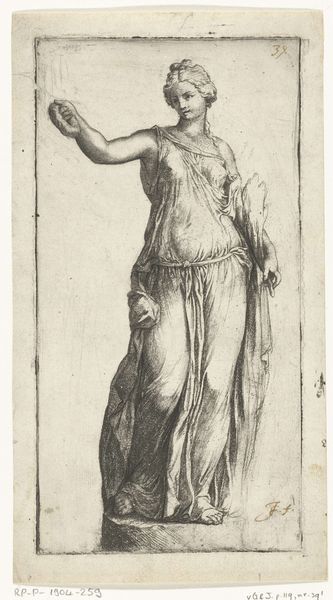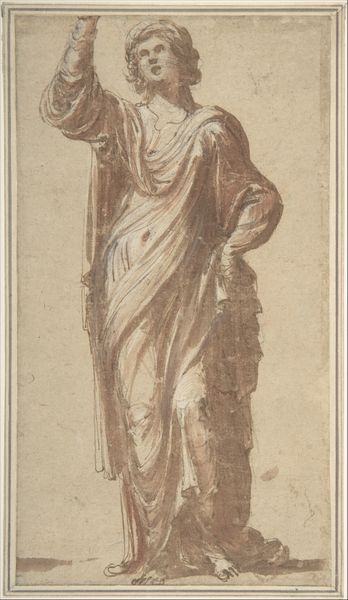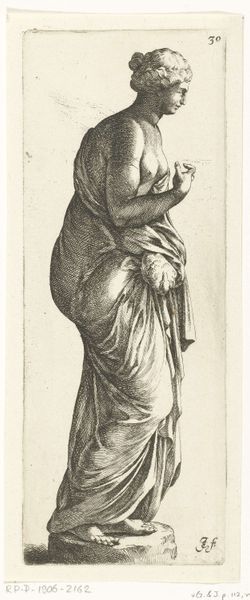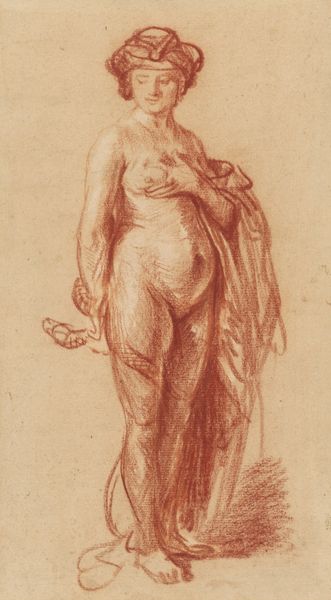
drawing, pencil
#
portrait
#
pencil drawn
#
drawing
#
neoclacissism
#
toned paper
#
light pencil work
#
pencil sketch
#
figuration
#
personal sketchbook
#
pencil drawing
#
pencil
#
sketchbook drawing
#
portrait drawing
#
pencil work
#
history-painting
#
sketchbook art
Dimensions: height 154 mm, width 86 mm
Copyright: Rijks Museum: Open Domain
Editor: This is "Ontwerp voor een standbeeld van Lazarus," or "Design for a Statue of Lazarus," by Louis Royer, created sometime between 1803 and 1868. It's a pencil drawing. What I find most striking is the artist's skill in capturing the texture of the draped cloth, yet what should be considered in the context of this artwork? Curator: The rendering of drapery is certainly masterful, wouldn't you agree? Observe how the artist uses line weight and hatching to create volume and depth. How do these formal elements—line, tone, composition—contribute to the overall reading of the figure? Editor: Well, the upward gaze and the grasping hands definitely convey a sense of desperate appeal or reawakening. But the sketch format—does that influence our reading of the statue's form and intent? Curator: Precisely! This isn’t a finished sculpture, of course. It is, indeed, a study, an exploration of form and emotion rendered through the vocabulary of line and shadow. Royer, as a student and later a practitioner of Neoclassicism, sought an ideal form, one inspired by classical antiquity, using linear clarity to achieve this end. Consider, too, how the artist emphasizes musculature beneath the draped fabric. Does this contribute to the drama or to something else? Editor: Perhaps both? There's a tension between the revealed and concealed. The use of light pencil work enhances the effect. I can clearly see that the contrast adds depth and emphasis to key areas. Curator: An astute observation! The limited tonal range further directs our focus, wouldn't you agree? In essence, we confront the formal construction of emotion, a hallmark of Neoclassical aesthetics. The interplay of light and shadow models both the figure and the emotional state it occupies. Editor: Seeing it through this formal lens clarifies the piece! Thanks for shedding light on Royer's visual vocabulary. Curator: The pleasure was all mine. Every line holds intention; deciphering their arrangement offers untold insight into the genesis of a work.
Comments
No comments
Be the first to comment and join the conversation on the ultimate creative platform.
